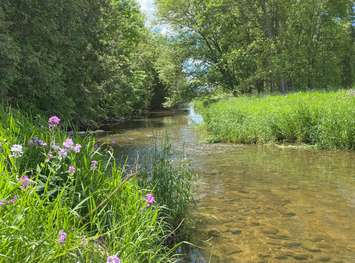The Maitland Valley Conservation Authority is marking a major milestone for the Provincial Water Quality Monitoring Network.
Communications Coordinator Jayne Thompson said their organization took the very first sample in the province on June 10, 1964, from the North Maitland River at Wellington Rd. 87, just west of Harriston.
"The purpose of the testing is to try to look at water quality in the streams and rivers across the province, and in particular, to look at trends that that we might be seeing in that water quality. There are now over 400 sites across the province where sampling is done, and it's typically done on a monthly basis. So in our case, we have 12 sites that we're monitoring for this program," she added. "Results are then sent to the lab for analysis, and we're looking at everything from temperature to oxygen levels to you know, how much chloride or dissolved sediment is in the water, phosphorus as well as metal as well."
Since then, thousands of samples have been taken in the Maitland watershed and across the province to identify water quality trends.
"Well, one thing I would note is when we talk about trends is we're really seeing a recent trend to increased levels of chloride in the water. So that's really salt," explained Thompson."And in particular, when we look at the sampling sites, we can see that that's more prevalent for those, that's rising, particularly in urban areas. On a more positive note, we have seen levels of phosphorus dropping in some of our sub basins in the watershed."
Thompson pointed out high chloride levels can impact the ecosystem.
"So, it can certainly have an impact on smaller creatures in the water," she warned. "When we think about our invertebrates, which are kind of the basis for life in the streams and Creeks. So we don't want to see high levels of salt in the water."
She said the test results help them work with municipalities to address issues.
"We certainly are working with our municipalities in terms of thinking about the amount of salt that we're putting on roads, so it's that idea of being the right amount on at the right time," she continued. "And also a lot of our municipalities have done work on ensuring proper storage of snow as well. So what we're concerned about sometimes is that spring quick melt of snow, there can sometimes be a flush of chlorides into the water."
The program is a collaboration between Conservation Authorities and the Ministry of Environment, Conservation and Parks.
"There's lots of good stewardship work going on in the land. So landowners really working to protect water quality, and ultimately to protect the state of Great Lakes as well," Thompson revealed. "So working, you know, at using this water quality data to help us identify where good spots for stewardship work might be is, is really helpful."






